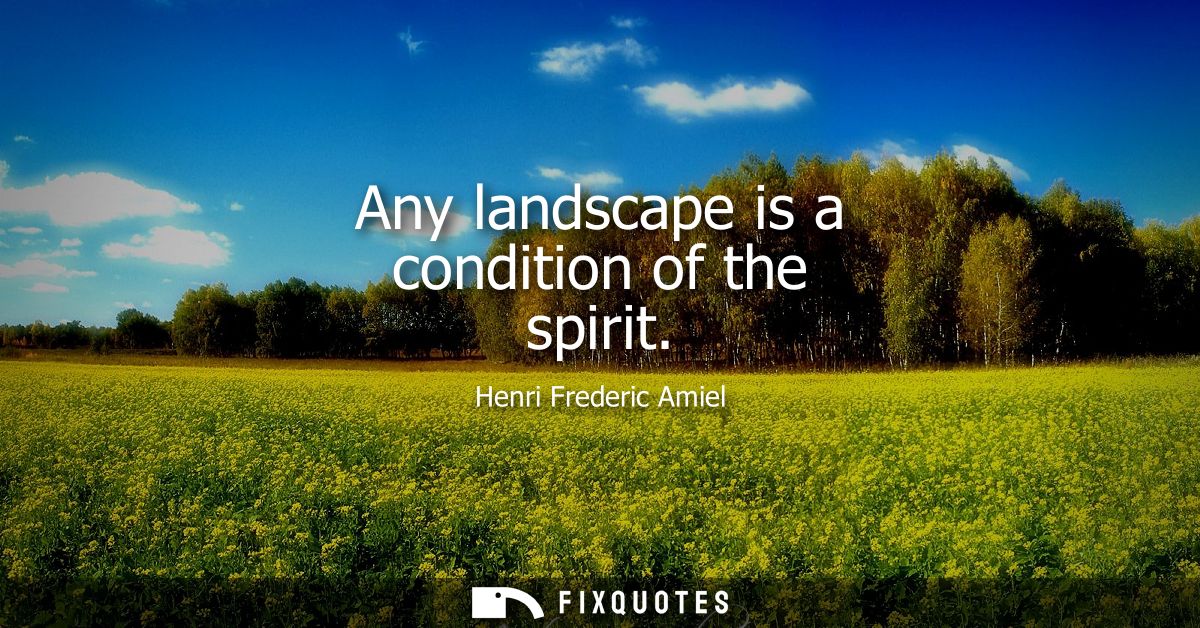"Any landscape is a condition of the spirit"
About this Quote
The landscape one perceives is deeply intertwined with the observer's internal state. A field, a mountain, or a city street does not exist as a neutral backdrop; rather, its meaning is colored and shaped by the emotions, memories, and preoccupations brought to it by the individual. Joy imprints brightness and vitality onto even the most monotonous stretch of earth, while melancholy might render verdant hills as desolate, silent, or oppressive. The spirit acts as a lens, filtering reality, projecting its moods and struggles outward onto the world, transforming physical reality into a metaphor for internal experience.
Amiel’s insight highlights how perception is subjective, mediated by feelings, and how the "condition of the spirit" determines what one notices and how one interprets those details. A thriving spirit might find hope in leafless trees or beauty in a stormy sky, while a troubled one might see only the reflection of its own despair. Our encounters with landscape thus become a dialogue between the outer world and the inner self. An empty street can evoke peace or loneliness; a quiet lake may seem tranquil or stagnant, depending on what is brought to it emotionally.
This view encourages attentive introspection. Understanding that physical surroundings mirror the spirit allows for a deeper awareness of one’s internal state, guiding self-exploration and personal growth. A shift in perspective, changing the condition of the spirit, can transform the landscape before us, revealing previously unnoticed beauty or meaning. It calls attention to the power of the inner life in shaping external experience and cautions against assuming that what is seen is inherent in the world, rather than generated by one's own spirit.
By recognizing this, one can approach both landscapes and life with greater empathy and flexibility, appreciating that every scene we encounter carries the subtle imprint of our own hearts and minds.
About the Author

